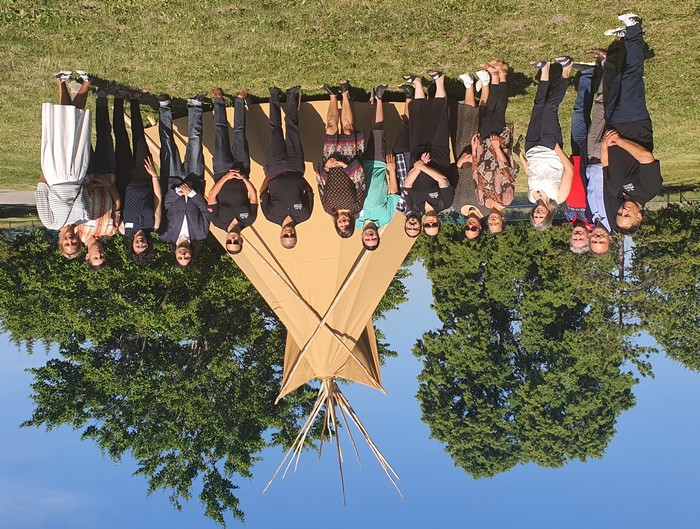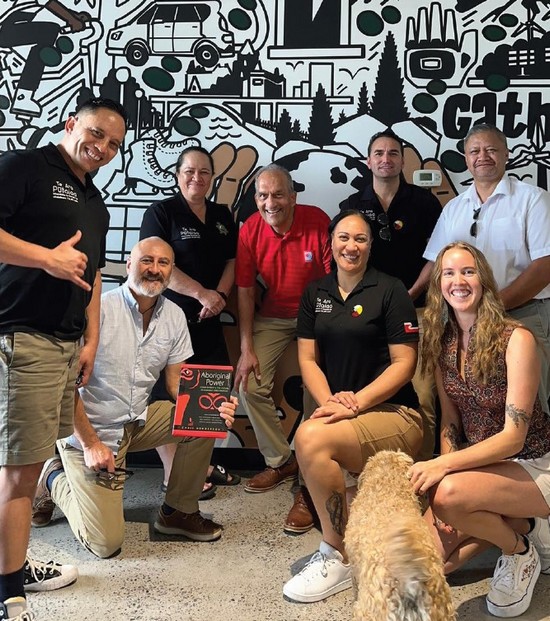Fostering global connections
Maōri leaders from NZ’s Crown Research Institutes went on an indigenous knowledge exchange to share knowledge and form links.
A group of Māori leaders from New Zealand’s Crown Research Institutes (CRIs) has shared indigenous knowledge and formed connections with indigenous groups in North America during a two-week knowledge exchange.

And the relationships formed are just the beginning.
Scion’s Te Ao Māori and Science Services interim general manager Shontelle Bishara is a member of Te Ara Pūtaiao, a pan-CRI Māori Leadership Group working to create space and opportunities for iwi and hapū to lead, collaborate and grow mātauranga Māori across
Aotearoa’s CRI system.
Te Ara Pūtaiao travelled to Ottawa and Vancouver in Canada and Honolulu, Hawaii for a two-week indigenous knowledge exchange in June and July.
They visited government agencies and not-for-profits, schools and universities, and met with indigenous peoples working within and with those organisations.
The aim of the exchange was to share indigenous knowledge and approaches to working with science and towards improved outcomes to major global challenges.
Canada and Hawaii were chosen because of existing relationships between some of the Te Ara Pūtaiao members and indigenous communities and researchers in those countries, as well as the similarities in challenges and opportunities to Aotearoa New Zealand.
Shontelle says similarities included the connection to the environment, intergenerational aspirations, shared values, and a common desire to grow the pipeline of indigenous researchers.
She enjoyed seeing young, indigenous people in leadership and visiting the Ottawan social enterprise Indigenous Clean Energy. It promotes indigenous inclusion in Canada’s energy futures economy and indigenous leadership and collaboration with players in that space.
“While I was there, I was thinking about the impact that Scion is driving in the bioenergy space and the circular bioeconomy, and the collaborative opportunities Scion could potentially pursue with Indigenous Clean Energy,” Shontelle says.
“I liked their model and strategy in terms of investing in building the capability and capacity of indigenous communities to be able to participate in the clean energy space.”
She says Indigenous Clean Energy was extremely open to sharing what they had learned through focusing on Canadian indigenous communities.
As climate change further impacts our environments, using indigenous knowledge is vital. - Tania Gerrard
Indigenous research strategy
The group also went to the Social Sciences and Humanities Research Council – Canada’s federal research funding agency to promote and support research and training in humanities and social sciences.
The agency facilitated an indigenous research strategy which took two to three years to pull together and has an indigenous leader advisory group.
“I thought it was great that they took the time to develop that strategy with time, investment, then follow through.”
Shontelle says the group was also honoured to participate in traditional ceremonies while in Canada, including smudging – a cleansing ritual – and attending a pow-wow – gathering to celebrate and honour traditional dancing and singing.
During the knowledge exchange, the group identified areas for immediate collaboration like climate change, energy security, food security and sovereignty, and rongoā.
Te Ara Pūtaiao was deciding on future partnerships and pathways from the trip but Shontelle says it could act as a conduit to bridge connections.
“For early career researchers, part of growing their science pathway is building international connections. Te Ara Pūtaiao could act as a facilitator to initiate these.”
While I was there, I was thinking about the work we’re doing in the bioenergy space and thinking what connection we’d be able to make there. - Shontelle Bishara
Building relationships
The group also hopes to harness and apply science and indigenous knowledge in a way that enables global collaborative research programmes and keep building and formalising global indigenous relationships.
From Shontelle’s perspective she wants to build relationships and facilitate connections between Scion and the organisations the delegation visited. She says collaboration opportunities could be aligned with Scion’s impact areas, including indigenous value chains and clean energy.
Tania Gerrard (Ngāti Porou) who is GNS Science’s general manager of Māori and Stakeholder Relations chairs Te Ara Pūtaiao.
She says the trip played into one of the directions of the Te Ara Paerangi White Paper which presents a vision for New Zealand’s public research science and innovation system.
The paper suggests facilitating and fostering global connectivity and international partnerships.
She says the trip facilitated deepening global connections.
“As climate change further impacts our environments, using indigenous knowledge is vital.
“There is a major opportunity for global collaboration.”
The other members of Te Ara Pūtaiao who went on the trip from June 22 to July 5 included Gerrard, AgResearch Urungi director Māori Strategy Chris Koroheke (Ngāti Maniapoto), Callaghan Innovation’s chief Māori government engagement officer Henare Johnson (Ngāti Whare), ESR’s general manager of Māori Impact Jymal Morgan (Ngāi Tahu), and NIWA general manager of Māori and Pacific Partnerships Marino Tahi (Ngāi Tūhoe).

